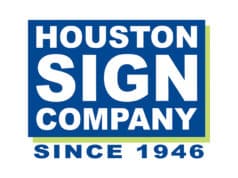
A sales presentation’s question-and-answer period is very similar to a panel interview. People ask questions one at a time, and you respond to each one. In this scenario, the authority roles are reversed: the expert is the one being interrogated, and the questioners are curious individuals with piqued interests.
Strong presentations usually result in your audience reflecting on preconceived notions and how your arguments reinforced or weakened them. Taking questions stimulates people’s cognitive activity, resulting in discourse. Discussions and arguments should be healthy for ideas to grow.
Five factors to keep in mind during audience Q&A sessions.
● Organize the sales presentation.
It’s a good idea to let your audience know up front that any inquiries made during the Q&A phase of the talk will be treated with respect. It’s helpful to lay the foundation. Make it clear that questions are welcome throughout the presentation. Everyone feels more at ease when expectations are set up front.
Additionally, you must exercise that amount of supervision at all times. A presentation can quickly go off course if you lose control of your audience. This is well shown when individuals ask questions out of habit and you have to deal with a core inquiry and many follow-ups or when someone purposefully annoys, irritates, and confuses you.
As soon as you lose control of your audience, you’ll find yourself frantically trying to reclaim it to save your Q&A session from going horribly wrong. Additionally, you need steely nerves and excellent self-awareness.
● Keep a cool mind
Anger is never the best solution in life. Maintaining composure is a crucial and often difficult thing to acquire. It’s considerably more challenging to do, particularly if you’re being forced into a corner. Neither option is the best when faced with the choice between flight and battle. Being composed and rational is.
During a sales presentation, it’s easy to see whether you’re stressed. There is a loss of dignity and confidence in your discourse. Your use of filler words is more frequent. Your physical cues are more combative. You begin to exhibit signs of anxiety, including fidgeting, chewing your nails, cold sweats, and similar behaviors. Your audience will immediately notice any of these if you use video in your presentation, and they will get disinterested. You can easily add videos to your presentation with predesigned Google Slides Themes.
Instead of freaking out, adopt a cool-headed attitude and respond accordingly to dispel any tension and attempts to sabotage your sales presentation.
● Validate
When audience members ask questions, they not only make themselves the focus of attention but may also bring up a topic previously discussed in your sales presentation. Don’t declare them to be mistaken in these situations of misunderstanding. Instead, demonstrate to them that you listened to them even if you will be repeating one or two points.
After they finish speaking, recognize them briefly. For instance, instead of saying, “Good question,” consider saying, “Thank you for that fantastic point,” or “I’m delighted you shared your viewpoint.” These words provide a place where they feel comfortable asking inquiries. Additionally, it inspires others to follow suit.
When you’re prepared, respond to the inquiry as usual. Don’t make it seem like they completely missed the message if you’re going to refer them to a slide. Just act carelessly. Avoid using any awkwardness to your audience.
● Pause for thought
Someone will inevitably ask you to provide more detail, so don’t be afraid to take a moment to prepare a strong response. Speaking right away when someone asks a question may give the impression that you are “programmed,”; yet, it may also suggest that you are quick-witted and don’t require much time to assemble your ideas.
Instead of taking a chance on a favorable or unfavorable impression, you may as well strike a balance. Pause for a little while to show that you are sincerely considering your response. People in the audience value presenters who prepare their remarks.
Even after pausing and giving it some thought, it’s possible that you still won’t have a good response. Being open about a question you couldn’t answer is preferred to pushing yourself to respond even when you have no clue what you’re saying. You might promise to seek the solution and take appropriate action.
● Confirm
Lastly, you don’t want your interrogator to remark, “You didn’t answer my question,” or “You didn’t address the points I made.”
Don’t assume that your audience’s question is resolved even if you address all of its points. “Does that address your question?” or “Does that explain the concept?” should be used as a follow-up. Those are excellent examples of showing compassion for their interest. Saying one of the two or asking a question of the same level demonstrates your sincere desire to explain everything to them. Make it clear to your audience that you will go above and beyond to ensure their understanding and satisfaction. Simply put, work to fulfill their requirements.
People who are listening to your sales presentation desire information in your pitch. If inquiries are not addressed, people will remember that.
In summary
Q&A sessions have the power to make or ruin your presentations. Your speech has already come to a successful conclusion. Avoid tripping and falling when you are within a few feet from the finish line. You just need to go that extra distance. Remain calm and persevere.








